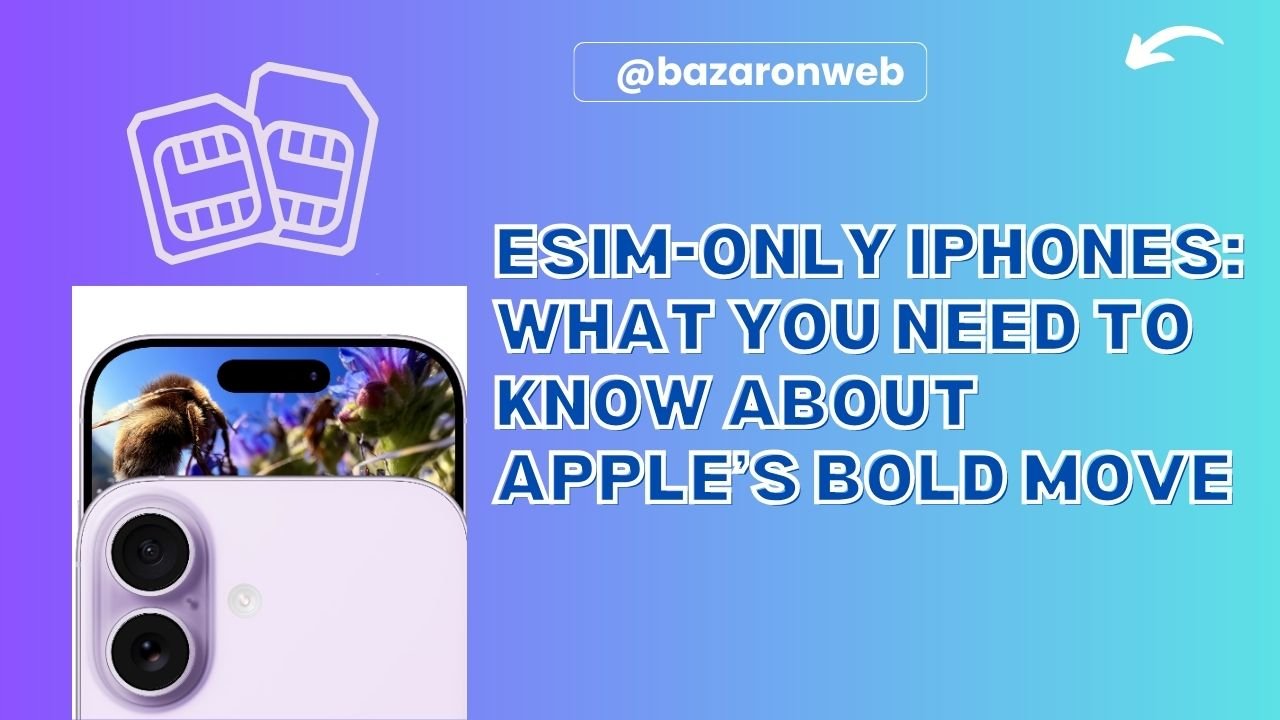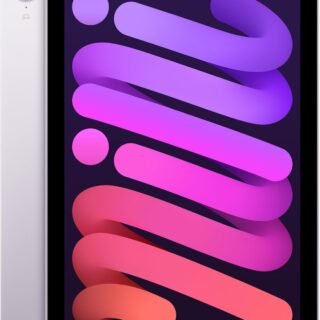Category
Popular Articles
- AI (11)
- Android (35)
- App Suggest (4)
- Apple (6)
- Apple TV (2)
- Bluetooth (2)
- Cars (2)
- ChatGpt (1)
- Did you know? (1)
- E-Commerce News (1)
- Ecommerce Websites business (7)
- Electronics Shopping (5)
- Fashion Tips (3)
- Gaming (3)
- Google Gemini (3)
- Hair Care Tips (2)
- How to (13)
- iCloud (1)
- Infotainment System (1)
- Iphone (96)
- Job Posting (1)
- Lifestyle (3)
- Mac (19)
- Mobile Games (1)
- Netflix (1)
- Online Shopping Websites (2)
- Personal Finance Management (3)
- Product Reviews (3)
- Roku TV (4)
- Samsung (7)
- Shopping Tips (10)
- Tech (69)
- Windows 11 (4)
- Zero Waste (3)
Discounted Products
-
 Leo Creation 144 TC Cotton Double Jaipuri Prints Flat Bedsheet(Pack of 1, Blue, Gree, Red, Grey, Light Grey)
Leo Creation 144 TC Cotton Double Jaipuri Prints Flat Bedsheet(Pack of 1, Blue, Gree, Red, Grey, Light Grey)
₹2,999.00Original price was: ₹2,999.00.₹329.00Current price is: ₹329.00. -
 Home Garage 210 TC Cotton King Floral Fitted (Elastic) Bedsheet(Pack of 1, Grey)
Home Garage 210 TC Cotton King Floral Fitted (Elastic) Bedsheet(Pack of 1, Grey)
₹999.00Original price was: ₹999.00.₹299.00Current price is: ₹299.00. -
 Goodrik 140 TC Cotton Double 3D Printed Flat Bedsheet(Pack of 1, Brown)
Goodrik 140 TC Cotton Double 3D Printed Flat Bedsheet(Pack of 1, Brown)
₹499.00Original price was: ₹499.00.₹229.00Current price is: ₹229.00. -
 GLOBALSHOP 350 TC Microfiber Double Floral Flat Bedsheet(Pack of 1, Multicolor)
GLOBALSHOP 350 TC Microfiber Double Floral Flat Bedsheet(Pack of 1, Multicolor)
₹1,250.00Original price was: ₹1,250.00.₹263.00Current price is: ₹263.00. -
 RisingStar 250 TC Microfiber King Printed Fitted (Elastic) Bedsheet(Pack of 1, FITTED-ROUND-CIRCLES-PREMIUM)
RisingStar 250 TC Microfiber King Printed Fitted (Elastic) Bedsheet(Pack of 1, FITTED-ROUND-CIRCLES-PREMIUM)
₹2,299.00Original price was: ₹2,299.00.₹299.00Current price is: ₹299.00. -
 Home Garage 210 TC Cotton King Floral Fitted (Elastic) Bedsheet(Pack of 1, Fitted Black Green)
Home Garage 210 TC Cotton King Floral Fitted (Elastic) Bedsheet(Pack of 1, Fitted Black Green)
₹1,299.00Original price was: ₹1,299.00.₹299.00Current price is: ₹299.00. -
 Home Garage 180 TC Cotton King 3D Printed Flat Bedsheet(Pack of 1, White)
Home Garage 180 TC Cotton King 3D Printed Flat Bedsheet(Pack of 1, White)
₹999.00Original price was: ₹999.00.₹229.00Current price is: ₹229.00. -
 Home Sizzler 153 cm (5 ft) Polyester Room Darkening Window Curtain (Pack Of 2)(Floral, Maroon)
Home Sizzler 153 cm (5 ft) Polyester Room Darkening Window Curtain (Pack Of 2)(Floral, Maroon)
₹799.00Original price was: ₹799.00.₹299.00Current price is: ₹299.00. -
 Panipat Textile Hub 152.4 cm (5 ft) Polyester Window Curtain (Pack Of 2)(Solid, Aqua)
Panipat Textile Hub 152.4 cm (5 ft) Polyester Window Curtain (Pack Of 2)(Solid, Aqua)
₹1,899.00Original price was: ₹1,899.00.₹299.00Current price is: ₹299.00. -
 Home Sizzler 214 cm (7 ft) Polyester Semi Transparent Door Curtain (Pack Of 2)(Floral, Maroon)
Home Sizzler 214 cm (7 ft) Polyester Semi Transparent Door Curtain (Pack Of 2)(Floral, Maroon)
₹1,199.00Original price was: ₹1,199.00.₹399.00Current price is: ₹399.00. -
 Home Sizzler 153 cm (5 ft) Polyester Room Darkening Window Curtain (Pack Of 2)(Floral, Brown)
Home Sizzler 153 cm (5 ft) Polyester Room Darkening Window Curtain (Pack Of 2)(Floral, Brown)
₹799.00Original price was: ₹799.00.₹299.00Current price is: ₹299.00. -
 Stella Creations 214 cm (7 ft) Polyester Room Darkening Door Curtain (Pack Of 2)(Abstract, Brown)
Stella Creations 214 cm (7 ft) Polyester Room Darkening Door Curtain (Pack Of 2)(Abstract, Brown)
₹1,299.00Original price was: ₹1,299.00.₹449.00Current price is: ₹449.00. -
 Homefab India 152.5 cm (5 ft) Polyester Room Darkening Window Curtain (Pack Of 2)(Floral, Light Blue)
Homefab India 152.5 cm (5 ft) Polyester Room Darkening Window Curtain (Pack Of 2)(Floral, Light Blue)
₹1,199.00Original price was: ₹1,199.00.₹319.00Current price is: ₹319.00. -
 Urban Home 214 cm (7 ft) PVC Transparent Door Curtain Single Curtain(Solid, Off White)
Urban Home 214 cm (7 ft) PVC Transparent Door Curtain Single Curtain(Solid, Off White)
₹699.00Original price was: ₹699.00.₹203.00Current price is: ₹203.00. -
 Panipat Textile Hub 213 cm (7 ft) Polyester Door Curtain (Pack Of 2)(Solid, Brown)
Panipat Textile Hub 213 cm (7 ft) Polyester Door Curtain (Pack Of 2)(Solid, Brown)
₹1,199.00Original price was: ₹1,199.00.₹349.00Current price is: ₹349.00.
Affiliate Links
Promotion

When Apple announced that some of its iPhones would be eSIM-only in the U.S., it sparked a lot of conversation. Some people were excited about the added flexibility and security, while others worried about how it might affect international travel or switching carriers.
Now, with the iPhone 17 lineup, Apple has doubled down on the trend—making eSIM-only models available in the U.S. and select other countries. As someone who relies on my phone every single day for both family life and work, I was curious to understand what this shift really means. After digging into it, I think this change is bigger than most of us realize.
Let’s walk through what eSIM is, why Apple is pushing it, and how it could actually make life easier (once we all adjust).
1. What is eSIM Anyway?
For years, every phone had a physical SIM card—that little chip you’d pop in and out to connect to your carrier. An eSIM (embedded SIM) is the digital version of that. Instead of sliding in a tiny plastic card, your phone has a built-in chip that can be activated by your carrier remotely.
Here’s what makes it interesting:
- You can store multiple eSIM profiles on one phone.
- Switching carriers or phone plans is instant—no need to hunt for a new SIM card.
- It’s built right into the phone, so there’s no slot to worry about losing or damaging.
Think of it like moving from physical movie DVDs to streaming services. The idea is the same, but it’s easier, more flexible, and less cluttered.
2. Why Apple is Going All-In on eSIM
Apple has a history of being bold with changes—remember when they removed the headphone jack? At first, people panicked, but eventually wireless earbuds became the norm. The same thing might happen here.
By going eSIM-only in the U.S. and other regions, Apple is betting on a few things:
- Security: eSIMs can’t be removed, making it harder for thieves to steal your phone and resell it.
- Convenience: Users can switch carriers with just a few taps, no store visits required.
- Space-saving: Removing the SIM tray makes iPhones slimmer and gives Apple room for other features.
- Future-proofing: As the world goes digital, physical SIM cards could eventually feel outdated.
3. Greater Flexibility for Users
One of the biggest advantages of eSIM-only iPhones is flexibility. With traditional SIM cards, switching between carriers or having multiple numbers meant juggling tiny chips. With eSIM, you can:
- Store more than one number (like one for work and one for personal use).
- Add international plans when traveling abroad without swapping cards.
- Instantly activate or deactivate a plan through your iPhone settings.
For busy moms like me, this flexibility is a game-changer. I can keep my personal number but add a temporary data plan if we’re traveling overseas without going to a store or waiting for a card to arrive.
4. Security Benefits You Can’t Ignore
We’ve all heard horror stories about stolen phones. With physical SIM cards, thieves could remove your SIM and make it harder for you to track the device. But with an eSIM-only iPhone:
- The SIM is embedded in the device—it can’t be removed.
- Carriers can instantly deactivate your eSIM remotely.
- You stay more in control, even in worst-case scenarios.
This makes iPhones not only more convenient but also more secure.
5. Concerns About Travel and Compatibility
Of course, this change isn’t perfect. Some people worry about international travel, since not all countries and carriers fully support eSIM yet. While Apple has made deals with many global carriers, there are still regions where getting an eSIM plan can be tricky.
That said, most major carriers are catching up quickly, and for frequent travelers, the ability to download an eSIM plan before even landing in a new country could end up being more convenient than hunting for a physical SIM at the airport.
If you’re planning to travel somewhere less connected, there may be some hiccups, but overall the trend is moving toward eSIM adoption worldwide.
6. Everyday Use Feels Simpler
For regular users, the shift might actually make life less stressful. No more tiny SIM cards to lose. No more waiting for a new one to arrive in the mail when you switch carriers. Everything happens right in the Settings app.
For example, when my husband recently switched carriers, it took hours at the store because of the SIM card swap. With eSIM, he could’ve done it in minutes without leaving home.
7. Apple’s Bigger Vision
Apple doesn’t make changes lightly. Going eSIM-only feels like part of their bigger vision of an all-digital, seamless iPhone experience. Just like they led the way with wireless headphones and eventually wireless charging, they’re leading the charge here too.
Within a few years, physical SIM cards might be a thing of the past, and we’ll wonder why we ever carried around those little trays and pins to eject them.
8. Final Thoughts
The move to eSIM-only iPhones in the U.S. and other countries is a bold step, but one that makes a lot of sense. It offers greater flexibility, stronger security, and a smoother user experience—all things that line up with the way we live now.
Yes, there may be challenges with international travel in the short term, but the world is adapting quickly. In a few years, this may be the standard across all smartphones, not just iPhones.
For now, if you’re thinking about upgrading to an iPhone 17, don’t be scared of the eSIM. It might feel like a big shift, but once you experience the convenience, you’ll probably never want to go back to physical SIM cards again.
Written by Bazaronweb
Latest Tech Articles
- How to see sofas, tables, and lamps in your actual living room before you click “buy”

- M5 Chip Unleashed: How Apple’s New Silicon is Revolutionizing On-Device AI

- iPhone 17 vs. iPhone Air: The Ultimate Specs Showdown (And Why I’m Already Eyeing the Trade-In Button)

- 5 Powerful Cybersecurity Apps Every Computer User Needs in 2026

- The 6 Most Reliable Laptop Brands in 2026: A Data-Backed Breakdown

Products
-
![Apple Watch Ultra 3 [GPS + Cellular 49mm] Running & Multisport Smartwatch w/Rugged Titanium Case w/Black Titanium Milanese Loop - M. Satellite Communications, Advanced Health & Fitness Tracking](https://bazaronweb.com/retailstores/wp-content/uploads/2025/09/apple-watch-320x320.jpg) Apple Watch Ultra 3 [GPS + Cellular 49mm] Running & Multisport Smartwatch w/Rugged Titanium Case w/Black Titanium Milanese Loop - M. Satellite Communications, Advanced Health & Fitness Tracking
Apple Watch Ultra 3 [GPS + Cellular 49mm] Running & Multisport Smartwatch w/Rugged Titanium Case w/Black Titanium Milanese Loop - M. Satellite Communications, Advanced Health & Fitness Tracking
-
 Apple iPad mini (A17 Pro): Apple Intelligence, 8.3-inch Liquid Retina Display, 256GB, Wi-Fi 6E, 12MP Front/12MP Back Camera, Touch ID, All-Day Battery Life — Purple
Apple iPad mini (A17 Pro): Apple Intelligence, 8.3-inch Liquid Retina Display, 256GB, Wi-Fi 6E, 12MP Front/12MP Back Camera, Touch ID, All-Day Battery Life — Purple
-
 Apple AirPods Max Wireless Over-Ear Headphones, Active Noise Cancelling, Transparency Mode, Personalized Spatial Audio, Dolby Atmos, Bluetooth Headphones for iPhone – Space Gray
Apple AirPods Max Wireless Over-Ear Headphones, Active Noise Cancelling, Transparency Mode, Personalized Spatial Audio, Dolby Atmos, Bluetooth Headphones for iPhone – Space Gray
-
 Apple AirPods Pro 2 Wireless Earbuds, Active Noise Cancellation, Hearing Aid Feature, Bluetooth Headphones, Transparency, Personalized Spatial Audio, High-Fidelity Sound, H2 Chip, USB-C Charging
Apple AirPods Pro 2 Wireless Earbuds, Active Noise Cancellation, Hearing Aid Feature, Bluetooth Headphones, Transparency, Personalized Spatial Audio, High-Fidelity Sound, H2 Chip, USB-C Charging
-
 Leo Creation 144 TC Cotton Double Jaipuri Prints Flat Bedsheet(Pack of 1, Blue, Gree, Red, Grey, Light Grey)
Leo Creation 144 TC Cotton Double Jaipuri Prints Flat Bedsheet(Pack of 1, Blue, Gree, Red, Grey, Light Grey)
₹2,999.00Original price was: ₹2,999.00.₹329.00Current price is: ₹329.00.
Leave a Reply